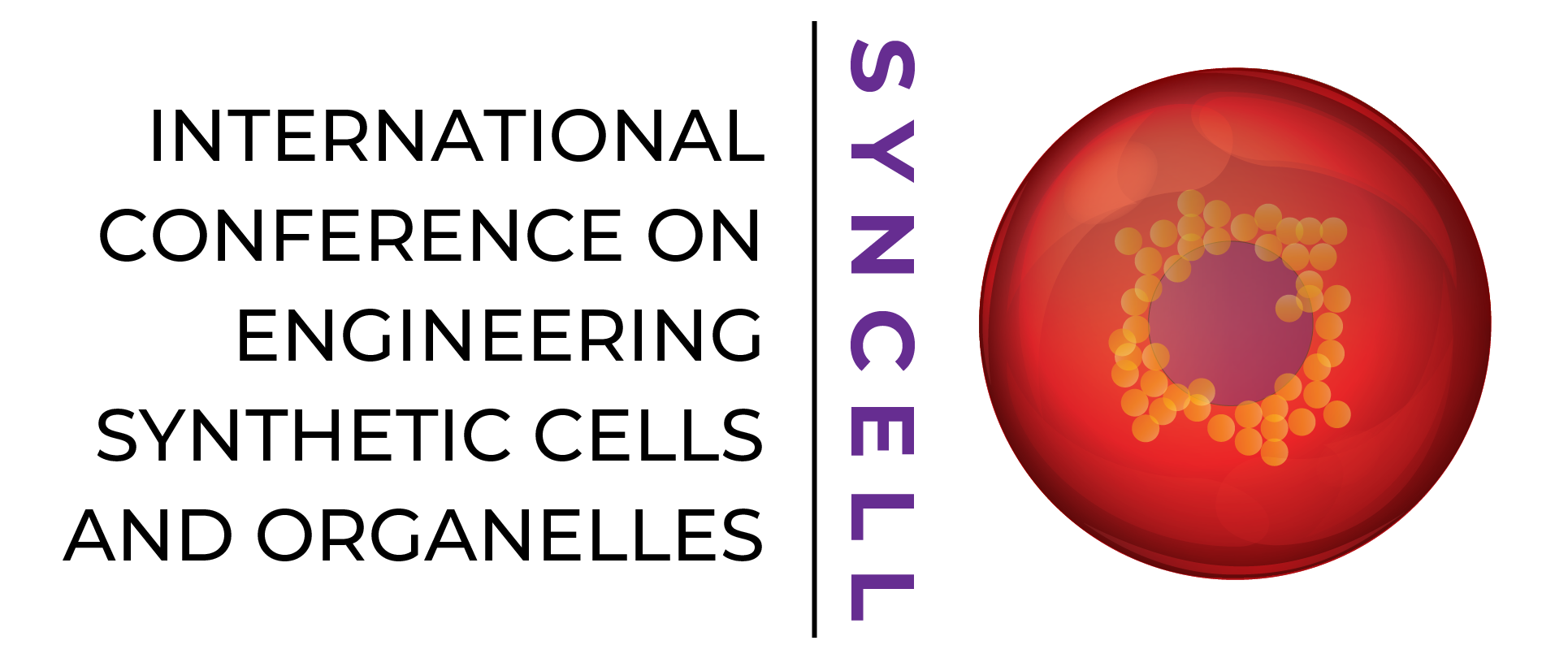
Controlled linkage of different proteins in Synthetic Cells
Presented by: Amelie Benk
Max Planck Institute for Medical Research
Contributed Talk
Abstract
AMELIE BENK
Title: Controlled linkage of different proteins in synthetic cells
Amelie S. Benk1, Lucia T. Benk1, Jonas V. Schaefer2, Birgit Dreier2, Seraphine V. Wegner3, Yoav Peleg4, Shira Albeck4, Tamar Unger4, Peter Comba5, Benjamin Geiger6, Andreas Plückthun2, Joachim P. Spatz1 1Max Planck Institute for Medical Research, Dept. of Cellular Biophysics; 2Department of Biochemistry, University of Zurich; 3Max Planck Institute for Polymer Research and Institute for Physiological Chemistry and Pathobiochemistry, University of Muenster; 4Structural Proteomics Center, The Weizmann Institute of Science; 5Inorganic-Chemical Institute and Interdisciplinary Center for Scientific Computing, Heidelberg University; 6Department of Molecular Cell Biology, The Weizmann Institute of Science
Keywords: DARPin, protein labeling, protein linkage, synthetic cell, giant unilamellar vesicle (GUV)
Shedding light into fundamental biological processes is often hindered by the extensive complexity discovered in living cells. Synthetic cell models with reduced and controlled complexity can therefore be a valuable tool for the detailed characterization of various vital mechanisms regarding individual proteins, protein systems and the cell. Recently, our lab could demonstrate the sequential bottom-up assembly of well-controlled, giant unilamellar vesicle (GUV)-based protocells equipped with purified cytoskeletal and adhesion associated proteins using high-throughput droplet-based microfluidic technologies (1). Controlled linkage of different proteins is a fundamental key in order to regulate self-assembly and functionality of cellular systems. Two different approaches are developed in our laboratory: (i) Implementing designed ankyrin repeat proteins (DARPins) as synthetic adaptor modules between natural proteins reduces the biological complexity by the restriction of the protein function to its binding capability. (ii) Beside these protein-mediated biochemical linkages, we additionally developed a simple, chemistry-based method for the coupling of proteins to surfaces and labels via metal complexes (2). Our compound proves site-specificity and kinetically inert immobilization of a protein to its target under physiological conditions providing a universal tool for various protein conjugation approaches.
(1) Weiss M, Frohnmayer JP, Benk LT, Haller B, Janiesch JW, Heitkamp T, Börsch M, Lira RB, Dimova R, Lipowsky R, Bodenschatz E, Baret JC, Vidakovic-Koch T, Sundmacher K, Platzman I, Spatz JP. Sequential bottom-up assembly of mechanically stabilized synthetic cells by microfluidics. Nat Mater. 2018 Jan;17(1):89-96. doi: 10.1038/nmat5005.
(2) Wegner SV, Spatz JP. Cobalt(III) as a stable and inert mediator ion between NTA and His6-tagged proteins. Angew Chem Int Ed Engl. 2013 Jul 15;52(29):7593-6. doi: 10.1002/anie.201210317.
Watch Now
Premiered April 26, 2021
